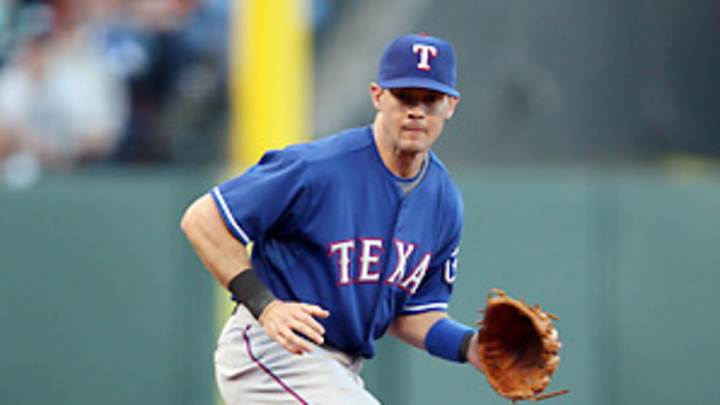Young might be the best player never to reach the postseason


1. Who is the best active player never to reach the postseason? It might be a close call between Texas third baseman Michael Young and Baltimore second baseman Brian Roberts. Young is right in the thick of the pennant chase and might even earn some recognition on MVP ballots. Roberts, meanwhile, continues to toil in obscurity -- even when chasing history. In his nine seasons Roberts has played for four managers and never even played on a winning team. At 31, Roberts is as consistent as ever, his 2009 stat line (.291/.356/.471) looking a whole lot like his career line (.285/.355/.422).
Where Roberts really excels this season is in his doubles output. He leads the league with 48, which puts 60 doubles in reach for the year, if not the 78-year-old record of 67 doubles by Earl Webb. How rare is that? There have been only six 60-double seasons in baseball history, and all of them occurred between 1926 and 1936. Roberts is one reason to pay attention to the Orioles.
By the way, the list of most hits among active players never to play in the playoffs looks like this:
1. Randy Winn, 1,6932. Young, 1,6523. Mike Sweeney, 1,4794. Aubrey Huff, 1,3735. Vernon Wells, 1,3306. Roberts, 1,242
2. The Red Sox made a smart move getting reliever Billy Wagner for 4A hitter Chris Carter and a warm body from their Gulf Coast League team. (The Mets can pick one name from among three at the end of the minor league season.) Having a second left-hander in the bullpen gives a manager much more flexibility with matchups late in the game, be it September or the playoffs.
The Dodgers (George Sherrill) and Rockies (Joe Beimel) quietly made similar trade moves and are reaping the benefits, especially now that often injured Hong-Chih Kuo is healthy again for Los Angeles and a slimmed-down Franklin Morales is throwing harder than ever (he has hit 96 mph) in his bullpen niche. How tough are those NL West left-handed tandems? Take a look at how they've fared versus left-handed hitters:
Wagner has the right to accept an arbitration offer after the season from Boston, but it's not without some risk. Salaries established through arbitration are not guaranteed, so Boston theoretically could cut him in spring training if they don't like the way he's throwing and be on the hook only for some termination pay, not what could be a $9 million arbitration award. But more realistically, the risk is with Wagner. The guy wants to get 400 saves. He wants to be a closer, not a setup man. So saying yes to an arbitration offer puts Wagner, at 38, in exactly the position he does not want.
3.CC Sabathia, all $161 million of him, has been the best offseason signing in all of baseball. The Yankees' biggest problem in their five-year World Series "drought" has been a lack of power arms who can make batters swing and miss. With A.J. Burnett, another free-agent signee, the Yankees are likely to have two pitchers on the same staff with 175 strikeouts for the first time since 2003, the last of three straight such years, and their last World Series team.
Sabathia, 28, was a particularly valuable pickup because he gives New York not just power but also youth, a rare commodity in New York and an important one because many of New York's recent older starters broke down or were in decline.
Just how rare is Sabathia's youthful power in pinstripes? In the Wild-Card Era (since 1994), the Yankees have used 57 starting pitchers in their 20s. None of them struck out 175 batters in a season -- at least until Sabathia does so. In the past 40 years only three Yankees pitchers struck out 175 batters in a season before they turned 30: Catfish Hunter (1975), Ron Guidry (1977, '78, '79) and -- get this -- Melido Perez (1992).
